Established in 1908, UBC’s Vancouver campus is an iconic part of Vancouver’s history. Though UBC’s campus is known today for its beautiful natural scenery and modern architecture, many of its original buildings still stand. Much like its student body, UBC’s architecture is incredibly diverse, with modern LEED Platinum certified facilities right next to Victorian-style buildings from the 1900s. To make sure that you get the most out of your time at UBC Vancouver, the VSP team has picked out five of our favorite historical buildings on campus. Here are the fascinating stories behind UBC’s oldest buildings
Chemistry Building

UBC’s Chemistry Building, completed in 1925, is one of the three original permanent buildings on the Point Grey campus. Construction began in 1914 but construction halted with the beginning of World War I and did not resume until 1923. This building has been renovated several times since 1925, but its exterior design remains consistent.
Bonus fact: This iconic UBC building is not only one of UBC’s oldest buildings but also a popular filming destination. It has been featured in Supernatural (2005-2020), Prison Break (2005-2017), and Night at the Museum (2006). Most recently, the Chemistry Building was seen in The Adams Project (2022), featuring Ryan Reynolds.
Learn more about the Chemistry Building’s history here
Asian Centre
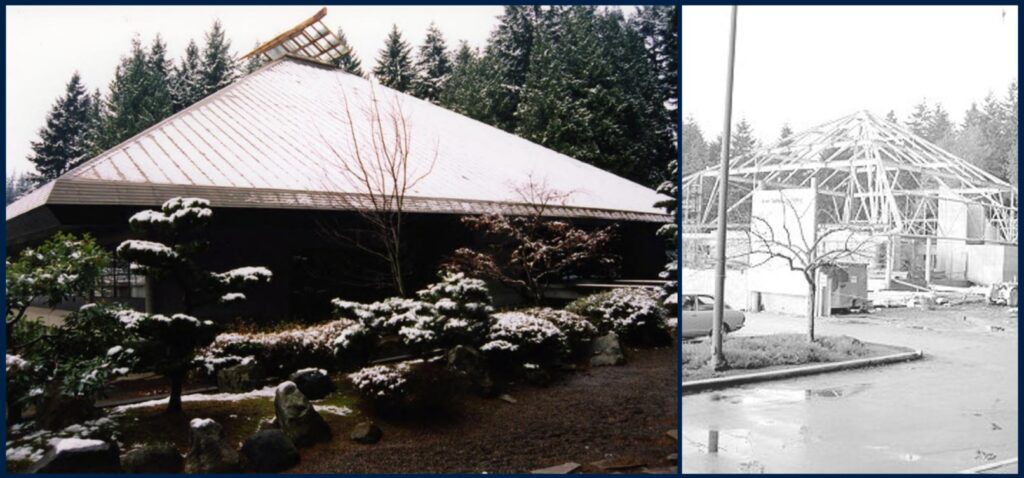
Completed in 1981, the Asian Centre is the permanent home of UBC’s Department of Asian Studies. The most notable part of this building is the large pyramid-shaped roof, which is a relic from the 1970 Osaka World Expo. Thanks to the efforts of Dr. S. Lida, UBC shipped the roof of the Sanyo Pavilion from Osaka to Vancouver in 1970 and used it as the centerpiece of the Asian Centre. Today, the Asian Centre is still covered by the roof of the Sanyo Pavilion and adorned with design elements from various Asian cultures.
In 2021, the Department of Asian Studies celebrated its 60th anniversary. The celebration featured a photo collection of UBC students at the Asian Centre. Learn more about the Asian Centre and check out the collection here.
Irving K. Barber Learning Centre
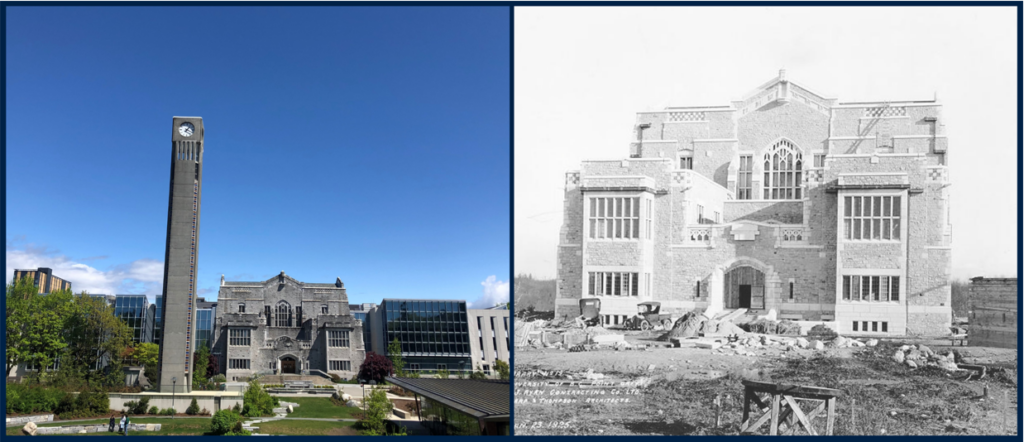
One of the most photographed buildings at UBC Vancouver, the Irving K. Barber Learning Centre (IKB) is one of UBC’s signature buildings. Alongside, the Chemistry Building, IKB is one of UBC’s first three permanent buildings. Upon completion in 1925, IKB’s “castle-style” façade became the first UBC library. The building was not actually called IKB until 2002 when a $20 million donation from Irving K. Barber funded the construction of the building’s modern wings (seen on the sides of the photo).
Today, IKB is one of UBC’s most popular study spots. One room in IKB that you might have heard of is the Ridington Room (also known as the Harry Potter room)! Designed like a Hogwarts study hall with portraits of old UBC presidents, this room is one of many excellent study spaces on campus. Learn more about IKB and other study spots on campus here.
Nitobe Memorial Garden
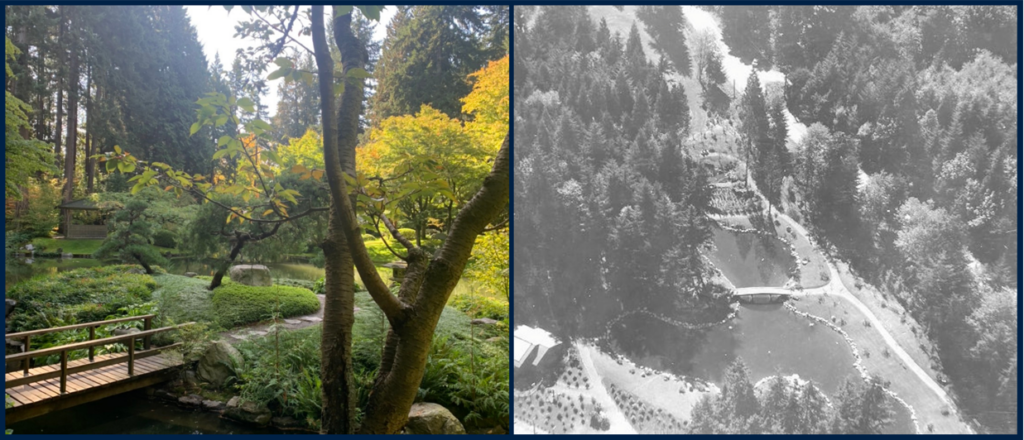
The Nitobe Memorial Garden, completed in 1960, is a Japanese-style garden located near the Asian Centre. It is recognized as one of the most authentic Japanese Gardens outside of Japan, having received praise from Emperor Akihito himself. The garden is named after Inazō Nitobe (1862-1933), a notable advocate for Japanese culture in the west. To honor Nitobe, the Japanese government sent Kannosuke Mori, a renowned landscape architect, to design the garden. Unfortunately, this garden would be Mori’s last work, as he passed away shortly after its completion in 1960.
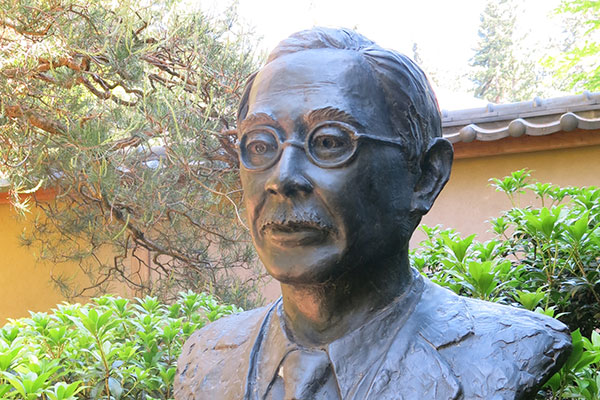
Today, the Nitobe Memorial Garden is open to the public and retains its authenticity thanks to curator Ryo Sugiyama, who was taught by one of Mori’s disciples. Learn more about the garden here.
Geography Building
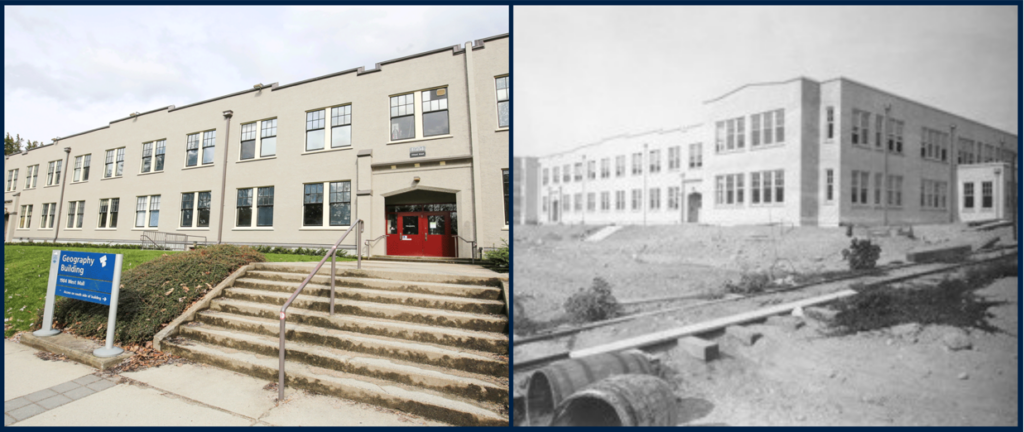
The Geography Building was completed in 1925 as a temporary home to UBC’s Department of Geology and Geography. Today, almost 100 years later, the temporary building is still in use. Although the building’s interior has been completely redesigned, the original exterior remains intact. The building is currently home to UBC’s globally renowned Department of Geography as well as the Geography Student’ Association
Learn more about the Geography Building and its history here.
If you want to explore these historical buildings yourself, apply for VSP 2022 here!